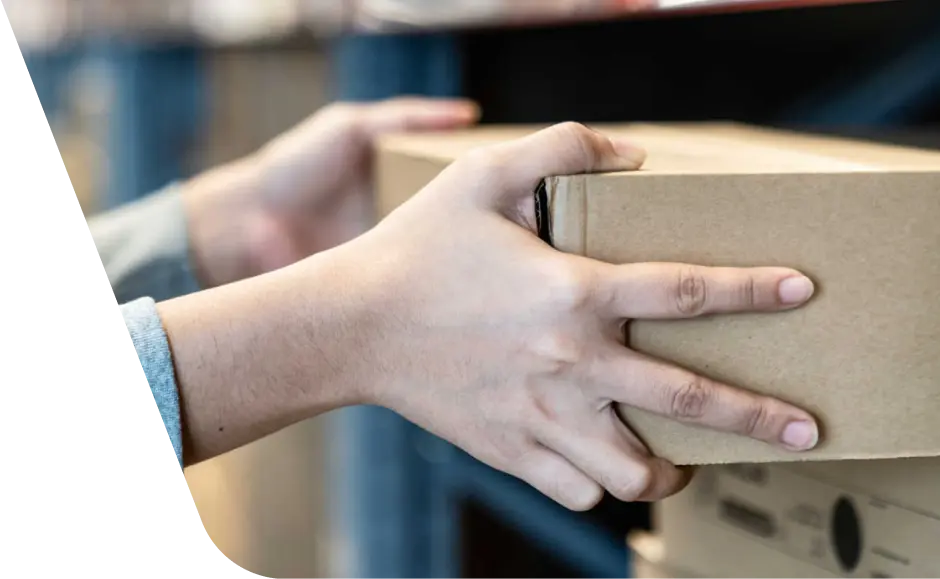The Problem
In store fulfillment is a multitude of processes - where the beginning and end points of the customer journey can be online or in person, and fulfillment options are decided on the spot.
This facilitates buying online and picking up in the store, shipping from stores directly to customers, and even shipping from a warehouse to a store for a customer to pick up in a store.
This desired end state of location-agnostic fulfillment has been the norm for national retailers such as Target for at least a decade - and the price of this solution is starting to come down. It’s still wicked expensive though, usually in the six-figure range.
On top of that, extensive customization is needed in order to get the system to work. These systems are built on decades old technology, and need to be customized on a one-to-one basis for every single client.
For some ambitious merchants, this is too expensive to justify, even if they are well established.
When using these systems, inventory isn’t always in real-time, leading to missed opportunities and errors because of inaccurate data through an outdated system.
So where is a merchant to turn?
Statistics + Resources
Statistics + Resources
Omnichannel and in-store fulfillment is new enough that it can be a competitive advantage for many merchants and retailers. Just take a look at these surprising statistics (another way to describe in-store fulfillment is Click and Collect.):
- 49% of U.S. Consumers used Click and Collect for the first time in 2016. - CNBC
- 71% of US shoppers have used Click and Collect in the past 12 months - CNBC
- Less than 30% of retailers in North America have implemented in store fulfillment that is working well. - Statista
- Retailers who offer in store fulfillment get 10-30% higher conversion rates over retailers who do not, Forrester Research
This is a huge gap in the market for retailers looking to move quickly to a solution that fits their customer’s desires.
How It's Being Done
How It's Being Done Currently
For merchants and retailers that don’t have an in store fulfillment system already in place, there is a disparity between inventory and order management systems used for physical locations and distribution locations.
Typically, we see one system being used to manage a warehouse, and another system (usually point-of-sale) that is used across retail stores. This means that although the inventory is owned by the same company, it isn’t available for all customers - it’s available for a subset of customers, based on how they interact with the company.
This lack of a consistent connection is the main issue to enabling in store fulfillment.
The other issue is a lack of real-time inventory. Even if a connection exists between the two, without accurate data on what’s in stock and where it is, customers will be disappointed if they are told one thing but experience another.
Without this active connection, customers can’t see where products are available. For instance, they may need a product today, and want to order it online, but pick it up in store. It doesn’t matter if the product is in stock or not - if the customer can’t see it, they’ll make a purchase somewhere else.
SkuNexus Approach
The SkuNexus Approach
SkuNexus approaches in store fulfillment as a necessity. It’s not optional, it’s part of the normal functionality of the platform.
Our philosophy is to turn every retail location you have into a ‘mini warehouse’. This means that from the system’s point of view, retail locations are capable of the same functions and processes that a distribution center.
Inventory is shared across all locations and is accessible to employees and customers, regardless of how they choose to interact, and the customer has complete control over how they receive their purchases.
Having a single system across the enterprise is preferred over connecting separate systems, since the delay between systems may be too slow or inaccurate. However, this isn’t always possible, so SkuNexus is able to connect to both POS and warehouse systems if needed.
Our platform creates a fulfillment process that tracks inventory in real-time, provides customers with choices when placing an order, and allows information sharing to all parts of the enterprise to create a fantastic customer experience.
There are many different ways to make that happen, so these are the features within SkuNexus that are heavily used for this purpose.
SkuNexus Features
SkuNexus Features
Fulfillment
The core of in store fulfillment is (obviously) the fulfillment features in the platform.
The first step is to create the correct user profiles - for retail workers, warehouse employees, admins, and managers if necessary. They’ll all need to be able to see and manage inventory.
Second, integrating with other necessary systems is relatively easy as well - including POS, ecommerce platforms, and marketplaces.
With options for in-store fulfillment being passed from the POS system to SkuNexus, and from an ecommerce platform to SkuNexus, there’s a single hub with the most up to date inventory information, giving customers a variety of options.
Inventory
By managing stock at a very high level, SkuNexus provides insight into where products are, how many you have, and the stage they are at.
For instance, when a retail worker assists a customer with an order placed online, since the item isn’t in stock at the store, the products in the order immediately appear as assigned to that order, and are no longer available for other uses.
Warehouses
A key component of how SkuNexus manages inventory is based on location. A single SKU has a location associated with it. This includes a geographical location and a relative location. Geographical location is the warehouse, retail store, or distribution center, and relative is the place that it occupies within that location.
Additional Reading
Related Reading For In Store Fulfillment
Learn more about how in store fulfillment can boost your sales in our latest blog.
Customer Stories
Blog
Guides & Ebooks









